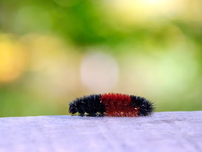top of page


Fast fact: Snowy owls
Snowy owls visit our area only in winter, with sightings varying based on food in their Arctic breeding grounds. These large, mostly white owls are the heaviest in North America. Males get whiter with age, while females keep dark markings. Unlike other local owls, snowy owls are active and hunt during the day. They eat small mammals like rodents and rabbits here, and lemmings in the Arctic.


Fast fact: Dark-eyed juncos
Dark-eyed juncos spend summers in Canada and migrate to northern Illinois for winter, arriving in October and staying until early spring. These small, round birds with gray or brownish-gray bodies, white bellies and pinkish bills are part of the sparrow family. They’re among the most common birds in North America and are often seen under feeders eating spilled seeds. In warmer months, they also eat insects like ants, beetles, caterpillars and flies.


Fast fact: Reindeer
Reindeer, also known as caribou, are relatives of the white-tailed deer found in Will County. Unlike other deer, both male and female caribou grow antlers, so Santa’s reindeer could be girls. Caribou live in northern forests of Alaska and Canada and migrate over 3,000 miles each year—the longest of any land mammal in North America. And no, none have been found with glowing red noses like Rudolph.


Fast Fact: Canada geese
Canada geese are known for being aggressive in spring during mating season. They mate for life, choosing partners of similar size at age 2 or 3. Each spring, females lay 2 to 10 eggs and stay on the nest while males guard it. The goslings stay with their parents for about a year before joining a group of juveniles.


Fast fact: White-tailed deer
White-tailed deer are the largest wild mammal in Illinois, weighing 125–300 pounds and standing up to 3½ feet tall. Only males grow antlers. Though bears and bison are seen, they don’t live wild in Illinois. Deer live in urban, suburban and rural areas, wherever food is available. They eat grasses, leaves, twigs, fruits and, in farm areas, crops like corn and soybeans.


Fast fact: Coyotes
Coyotes, Illinois’ largest predator, are part of the dog family and closely related to wolves. They mainly eat animals like rabbits and mice. While they may occasionally hunt small pets, coyotes usually avoid humans. To keep pets safe, don’t leave them unattended outside, especially at night.


Fast fact: Wild turkeys
Wild turkeys live throughout Will County and are very different from farm-raised turkeys. They can fly short distances at speeds up to 50 miles per hour to escape predators. Wild turkeys have dark brown feathers with colorful iridescence, while farm turkeys are mostly white with red wattles. Even though they are a Thanksgiving tradition now, turkeys probably were not part of the first Thanksgiving meal.


Fast fact: Woolly bear caterpillars
Woolly bear caterpillars, which grow into Isabella tiger moths, are often thought to predict winter based on their brown band size. However, band size is actually linked to age and diet. While they can’t forecast weather, they do have a cool survival trick. They produce glycerol, a natural antifreeze, that protects their cells when they freeze in winter, helping them survive extreme cold.
bottom of page